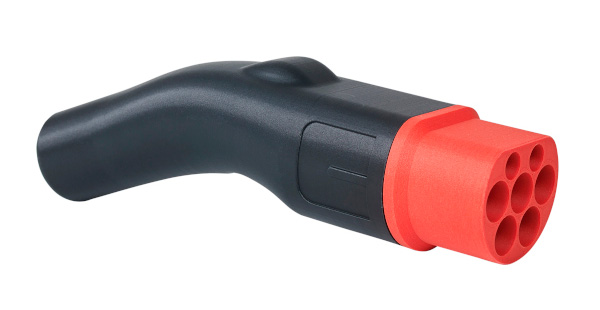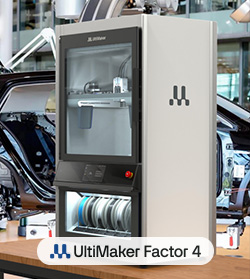Flame retardant materials

Plastic components connected to electrically live metal parts tend to burn easily and must comply with strict fire safety regulations. Therefore, electronic devices must be certified as flame retardants, which prevent or delay the development and spread of fires in various ways.
With Exolit® OP, Clariant offers a product family of tailor-made flame retardants based on non-halogenated organic phosphorus compounds which are a safe and environmentally compatible alternative to traditional ones.
Considering the growing demand for flame retardant materials, Crea3D team has introduced a new material on the market: Clariant polyamide filled with 20% glass fiber.
This Filament: PA6/66-GF20 FR LS, using Exolit® particles, is a newly developed flame retardant material compliant with:
- [EN 45545-2] - Railway Applications
- [NFPA 130] ASTM E162, ASTM E662 - Standard for Fixed Guideway Transit and Passenger Rail Systems
- [SMP 800-C] - Smoke and Toxic Gas Generation

This material was designed specifically for 3D printing to achieve ideal mechanical properties with excellent flame retardancy, low smoke and low toxicity.
The material is ideal for the production of end use parts, using printers with enclosed or heated chambers.
[EN 45545-2] Railway Applications
The standard, part of the EN 45545 series, specifies the fire behaviour requirements of materials and products used on railway vehicles as defined in UNI CEI EN 45545-1. PA6/66-GF20 FR LS filament is a material certified for use in the railway sector, thanks to its fire resistance. Fire-resistant materials are certified with reaction to fire tests (flammability, flame spread) and smoke toxicity and opacity tests.
For the construction and aeronautics sector, other types of regulations are in force, which often refer to the same test methods as the standards of the railway sector, for this reason the PA6/66-GF20 FR LS filament is a material that is more than valid also in other sectors.

[NFPA 130] ASTM E162, ASTM E662
This standard specifies fire protection and life safety requirements for underground, surface and elevated fixed guideway transit and passenger rail systems.
[SMP 800-C] Smoke and Toxic Gas Generation
The SMP 800-C test measures the toxic gas generation that results from the combustion of certain materials. The gases measured are carbon monoxide, hydrogen fluoride, nitrogen dioxide, hydrogen chloride, hydrogen cyanide, and sulphur dioxide. Each one may reach a maximum concentration. Once the concentration is reached, the gas generation is considered to be beyond acceptable levels.
PA6/66-GF20 FR LS Clariant material ensures that the gases emitted in the event of an accident and subsequent combustion remains within certain acceptable levels, reducing the possibility of damage to operators and passengers, also reducing the possibility of fire spreading.
The benefits of using this material to produce final parts directly used on vehicles are summarized below:
- Flame retardant material
- Good impact strength and stiffness
- Good low temperature properties (e.g. -40°C)
- Outstanding wear resistance
- Good temperature resistance
- Reduced thermo-oxidative degradation
- Improved long term heat and stability to ultraviolet and visible light
In Same Category
- Fireproof additive manufacturing: the benefits of flame retardant materials in modern industry
- KIMYA publishes the results from the Life Cycle Analysis for its 3D filaments
- The advantages of High Temp TPU
- Antibacterial PLA for medical applications
- PETG Magneto Detectable for the Food&Beverage Industry
Related by Tags
- Krones: Optimized 3D-printed parts & spares for customers anywhere
- 3D printing for the production of sheet metal bending dies
- Bambu Lab X1E: multifilament 3D printing in industrial applications
- 3D printing for the Education and STEM disciplines: the FabLab Poliba experience
- Fireproof additive manufacturing: the benefits of flame retardant materials in modern industry







Leave your comment